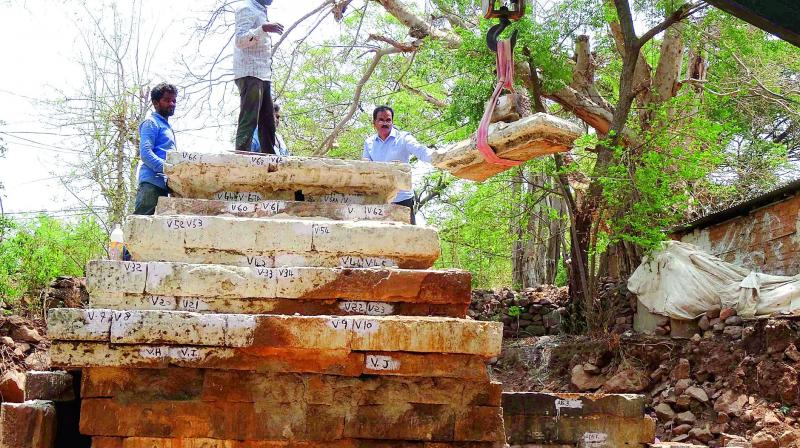Vijayawada: Preserving heritage is need for posterity

Vijayawada: World Heritage Week is celebrated all over the world every year from the 19th of November to 25th of November. Since the AP capital has been renamed Amaravati, Buddhist and other sculptures have appeared there in the last six months.
The CEO and founder of the CCVA (Cultural Centre of Vijayawada and Amaravati), Dr E. Sivanagi Reddy, who is an archaeologist, has so far identified more than 50 archaeological sites—- both prehistoric and historic and 75 monuments, particularly from Buddhist and Jain caves, Hindu temples, remnants of fortifications and ‘stepped’ wells, all lying uncared-for and neglected.
Mr Reddy and his team, in the course of its recent explorations, brought to light a rock-cut cave temple at Mustabada, in Krishna district.
A CCVA survey found a 4th century AD limestone Buddhist pillar, richly carved with ornamentation, used as a central pillar of the hotel AT Pinakadimi, near Eluru.
A mud rampart, at Kanukollu, where the fort wall (4th to 17th centuries AD) is overgrown with rank vegetation.

This is the fate of historical monuments, which reflects negligence of the concerned department and village authorities.
“A good number of historical sculptures are carelessly coated with paint, defacing their antiquity.
The CCVA appealed to the Endowment Department, to remove the patina, as was done for many other sculptures at temples in the state,” said Y. Hari Prasad, founder, chairman, CCVA.
A fort wall built of stone to enclose a military post, a commercial and administrative unit (13-17 AD), at Tangeda in Guntur, is also under occupation by unauthorised persons, despite the fort being declared ‘a protected monument’.
A Shaivite temple made of bricks by the Eastern Chalukyas of the 8th century AD, is located at Tripurantakam, in Prakasam stands as a testimony to monumental neglect.
A Buddhist pillar from Ponnapalli village in Guntur district, carved with half lotus medallions, dating back to the 1st century AD, was discovered by the CCVA recently.

